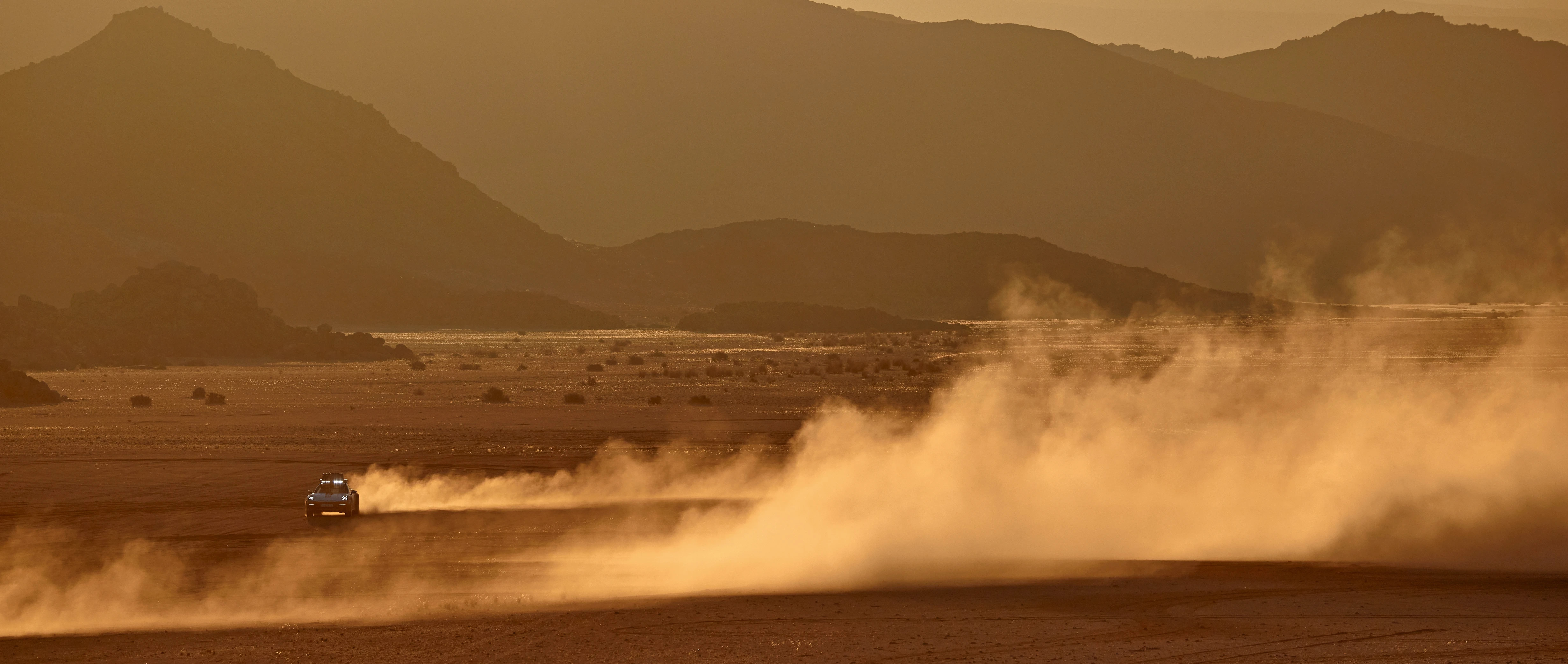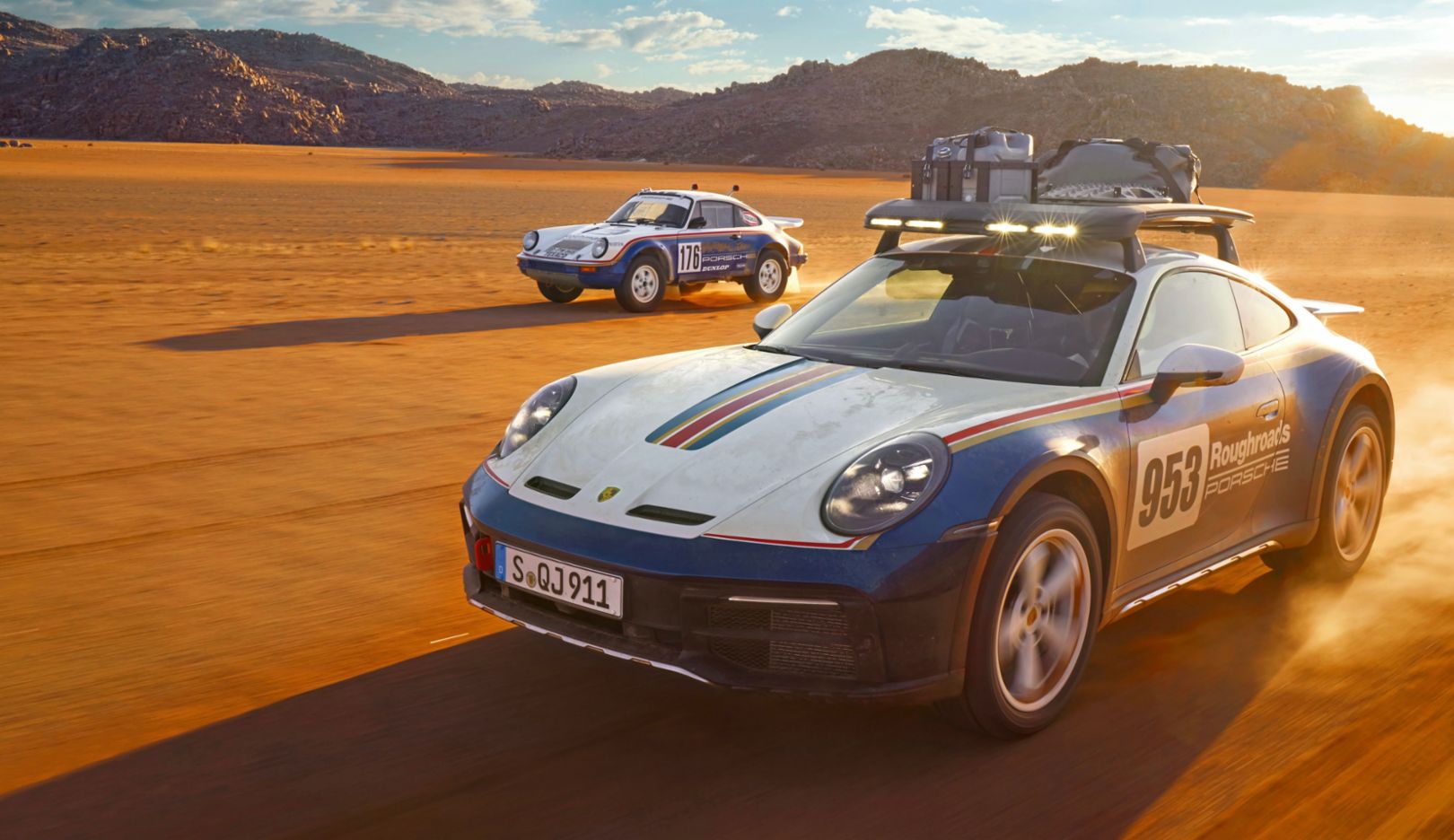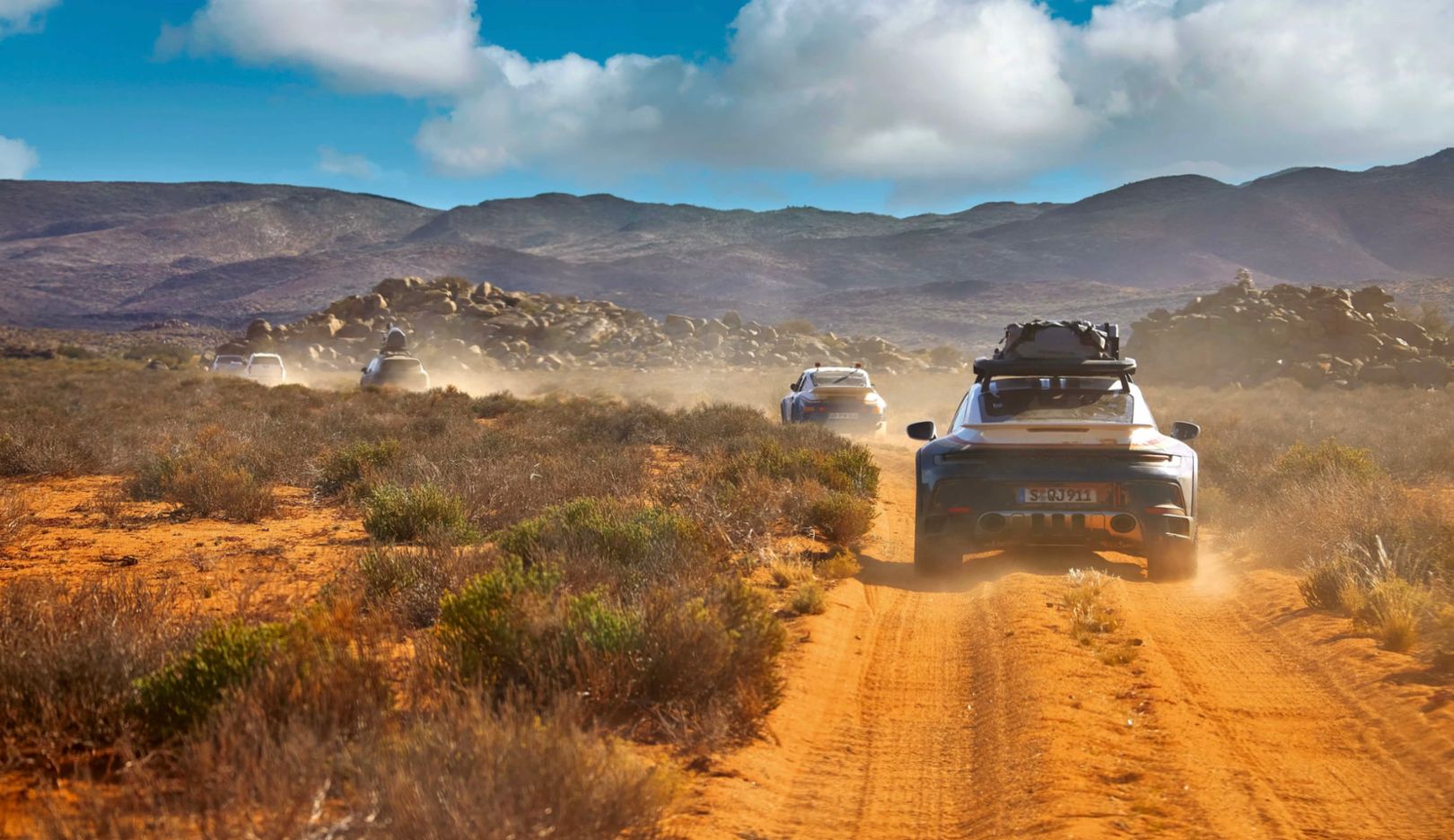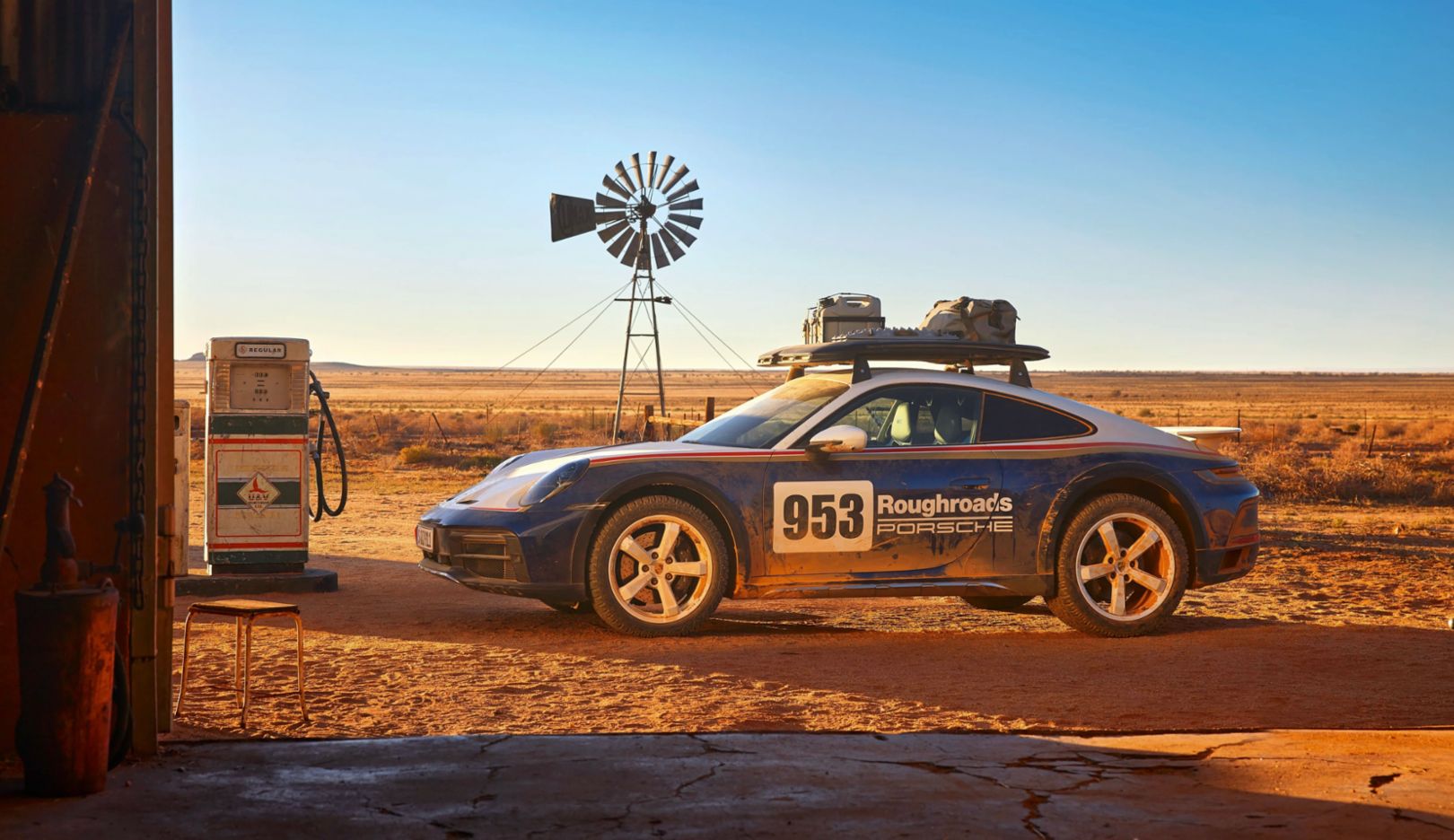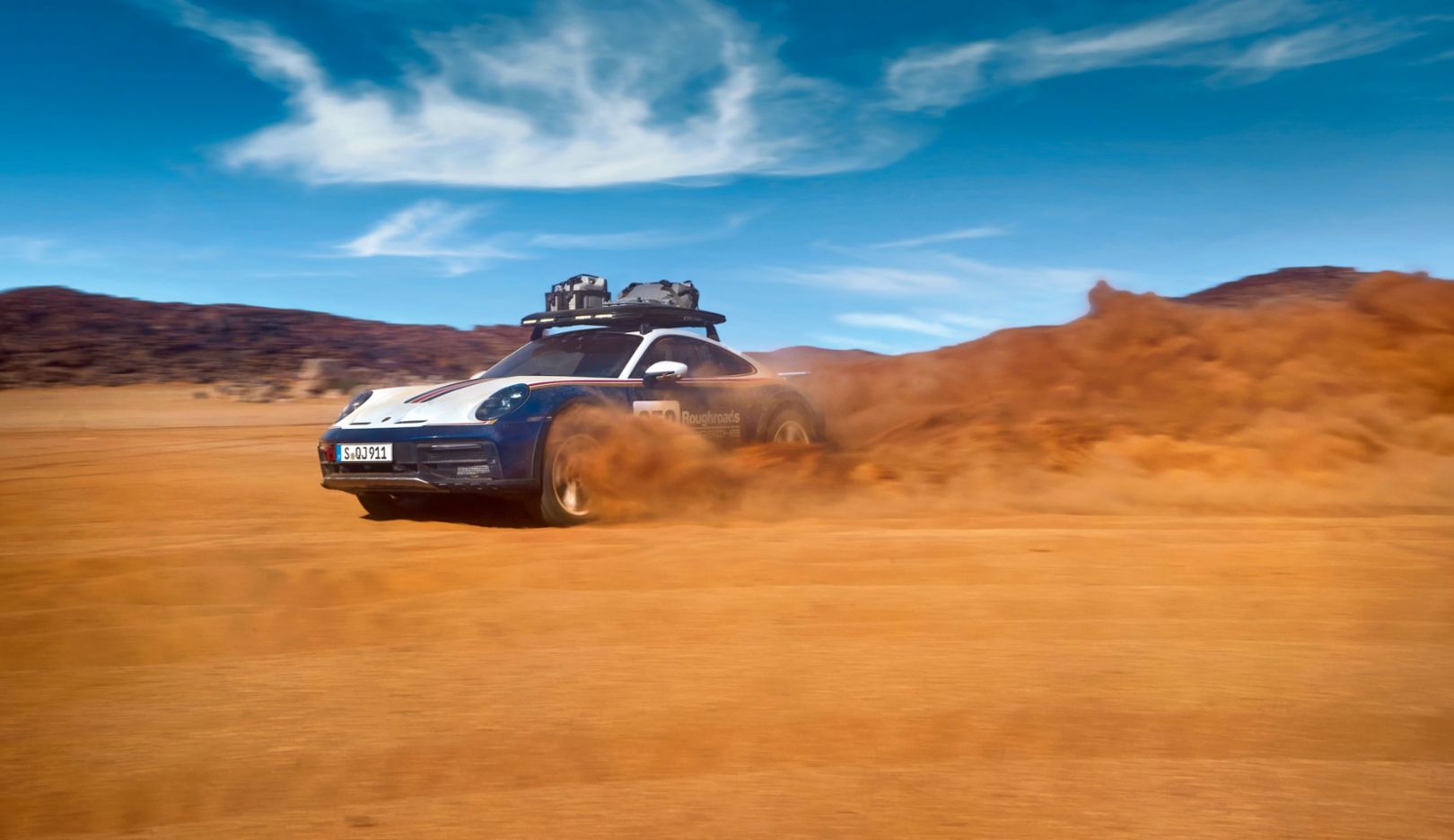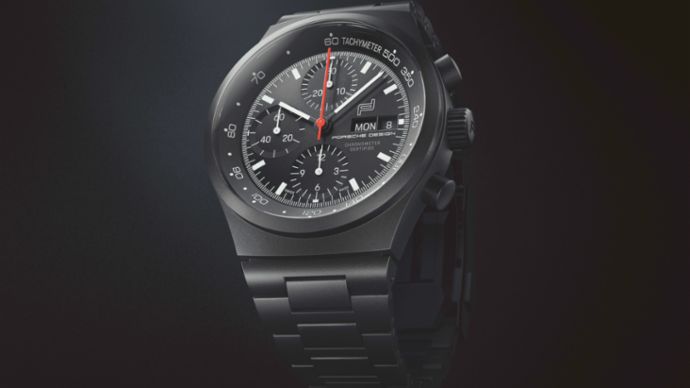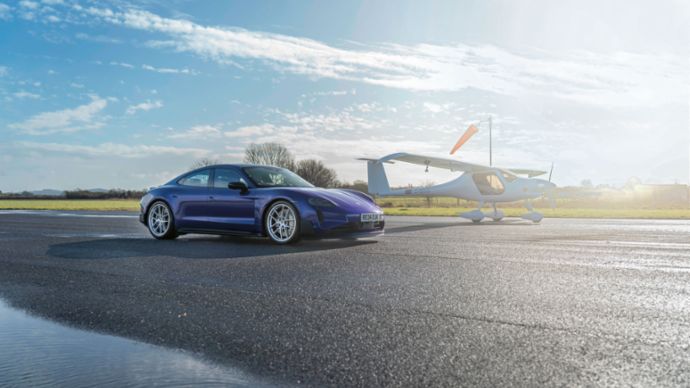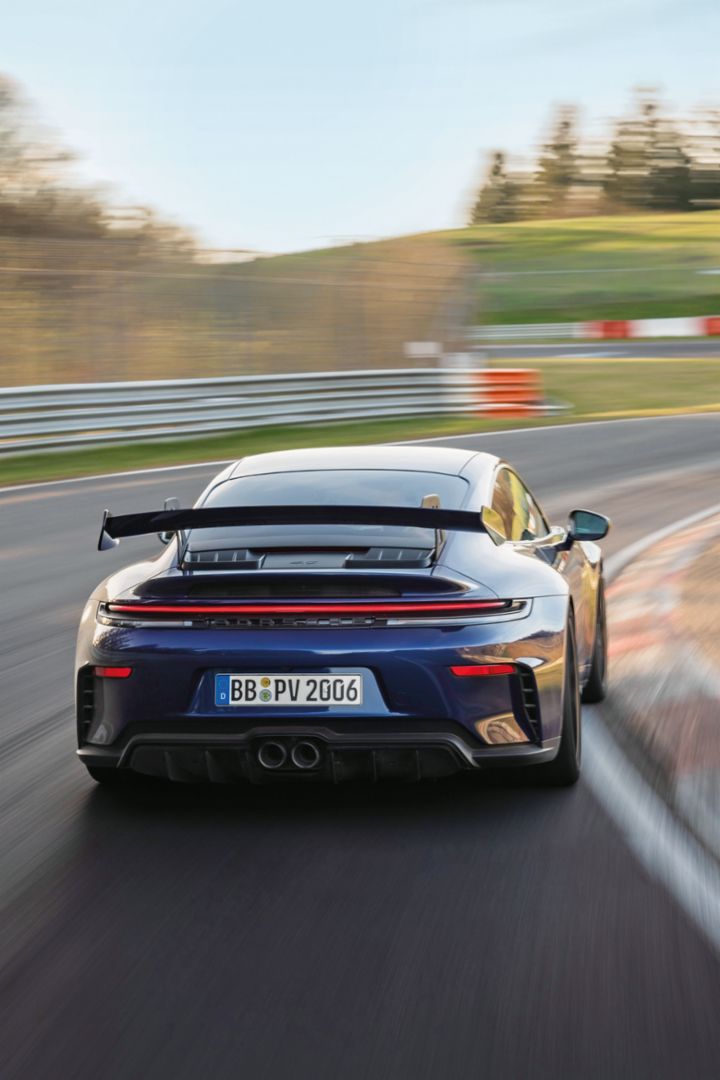Daredevil
The 911 Dakar can navigate terrains of all kinds, offering a unique option for sports car drivers in search of adventure both on and off the paved road. An irresistible temptation for professional rally drivers and more.
According to Ferry Porsche, the Porsche 911 is “the only vehicle you can drive from an African safari to Le Mans, then to the theater, and finally on the streets of New York.” Though he may not have meant it literally, it demonstrates just how versatile its creators thought the sports car of the century could be. And now you can also navigate gravel, sand, and rocks in a 911 – even at higher rally speeds when necessary.
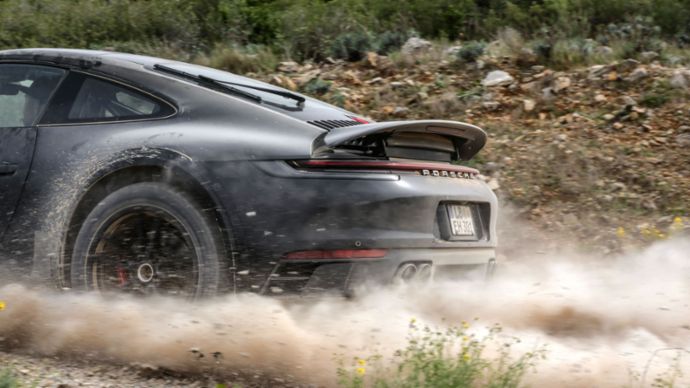
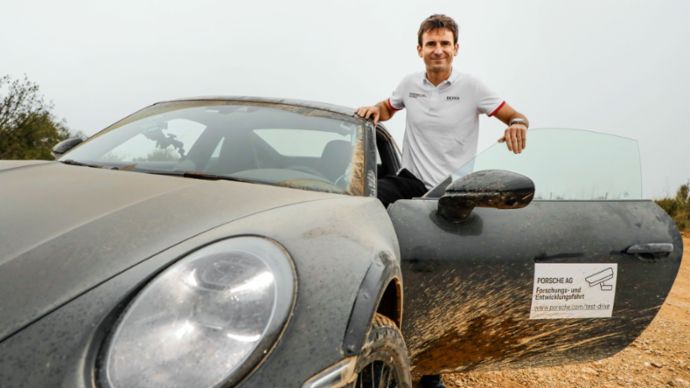
Test, part 1:
Works driver Romain Dumas races the 911 Dakar on the Châteaux de Lastours course in the south of France.911 Dakar – the best of both worlds

Off-road specialist:
The 911 Dakar can navigate terrain that has up until now only ever been mastered by genuine off-road vehicles.Porsche developers have accomplished quite a feat with the 911 Dakar, which is a sports car and off-road vehicle in one. The vehicle first unveiled its features in the desert near the city of Springbok, South Africa. The all-wheel 911 was safely delivered by truck, before embarking on the virtually endless route. Porsche pulled all the stops for the first photo shoot – with fans that send dust whirling, specially trained test drivers, and a Cayenne with camera crane.
Frank-Steffen Walliser, Head of the 911 and 718 Model Lines at Porsche until autumn 2022, also played a role in ensuring the 911 Dakar feels right at home in the desert. As Head of Complete Vehicle Architecture and Characteristics, Walliser is responsible for the technical design of the future Porsche models of all series. “We managed to achieve the perfect balance,” the expert says, delighted. “With high performance, outstanding driving characteristics on the road, exceptional suspension comfort, and sensational off-road characteristics.”
This technical masterpiece wouldn’t have been possible without the targeted optimization of the 911 Carrera 4S (992), which, with the drive of the 911 Carrera GTS served as the technical basis. Developed specifically for off-road requirements and loose surfaces, the Porsche Active Suspension Management (PASM) and other chassis control systems allow you to choose not only between the usual driving modes, but now also between rally and off-road. The 911 Dakar’s all-terrain tires were specially developed in collaboration with Pirelli, and the ground clearance increased by 40 millimeters. And if that’s not enough, the vehicle body can be raised hydraulically another 30 millimeters with the four-corner lift.
“Porsche developers consistently pursued their objectives,” explains Achim Lamparter, manager of the 911 Chassis, “ensuring optimal vehicle performance everywhere and in all conditions.” Testing was conducted in extreme conditions before the desert premiere. According to Lamparter, they navigated “terrain the 911 had never seen before,” including bumpy rally courses in France, frozen lakes in Lapland, and the dunes of Dubai, throughout the extensive phase of development and test-driving. Experience gained through the development of Porsche’s SUV models came in handy.
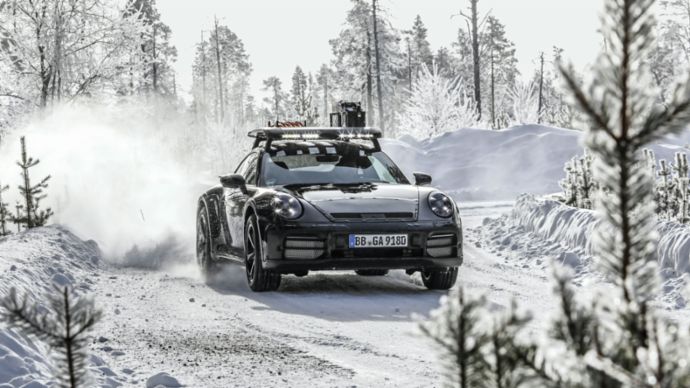
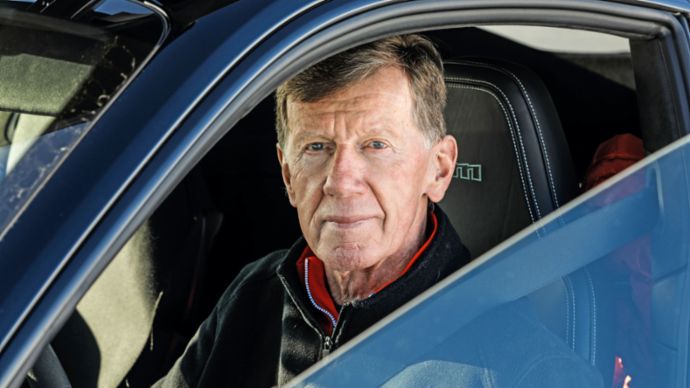
Test, part 2:
Former rally world champion Walter Röhrl conducts tests in extreme conditions in Sweden’s Lapland region.The all-arounder for ice, gravel, and desert
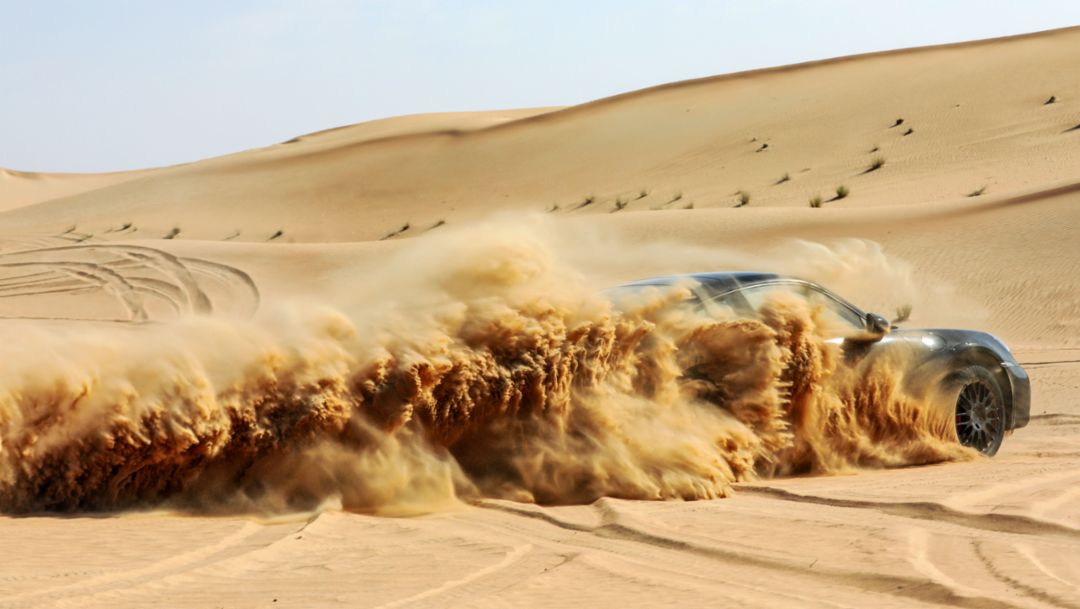
Test, part 3:
The 911 Dakar prototypes conquer gravel surfaces just as well as they do the dunes of Dubai.During the circular drives through the dunes of Dubai, the 911 Dakar left a spectacular fountain of sand trailing behind it. Despite the theatrics, however, the actual purpose was to take sound measurements. “Use on the road and racecourse can be simulated. Driving on dunes cannot,” explains Achim Lamparter. “Practical tests are necessary to make the systems safe. And you can’t drive too slowly, otherwise you’ll get stuck.”
The testing program also included driving in rally conditions. Former Porsche works driver, multiple Dakar Rally participant, and two-time Le Mans champion Romain Dumas was given the opportunity to race the 911 Dakar on the Châteaux de Lastours course in southern France. Measuring around 80 kilometers in length, the off-road course in the heart of the vineyards is popular with rally professionals, as it allows them to conduct durability tests in extreme conditions. “When the Porsche engineers told me they were coming here for testing, I said, ‘Are you sure? There’s nothing here but rocks and gravel,’” recalls Dumas. But according to Dumas, the 911 Dakar lived up to its name and was able to conquer rough terrain just as well as the race cars that are specially prepared for the world’s most demanding rally. “Before that, driving a sports car here was unimaginable,” he explains. “But not anymore.”
That wasn’t Porsche’s first foray into Dakar, which is why the name of the new model evokes memories of the company’s successful rally tradition, which began in 1965 with the 911 in the Rallye Monte-Carlo and continued later on with the East African Safari Rally. These activities culminated in the 1980s with the dramatic works campaigns in the Dakar Rally (see info box). Optional designs in the typical safari or Dakar look of earlier years are available for the new models to mark the 911’s upcoming 60th anniversary and recreate this tradition in the South African desert.
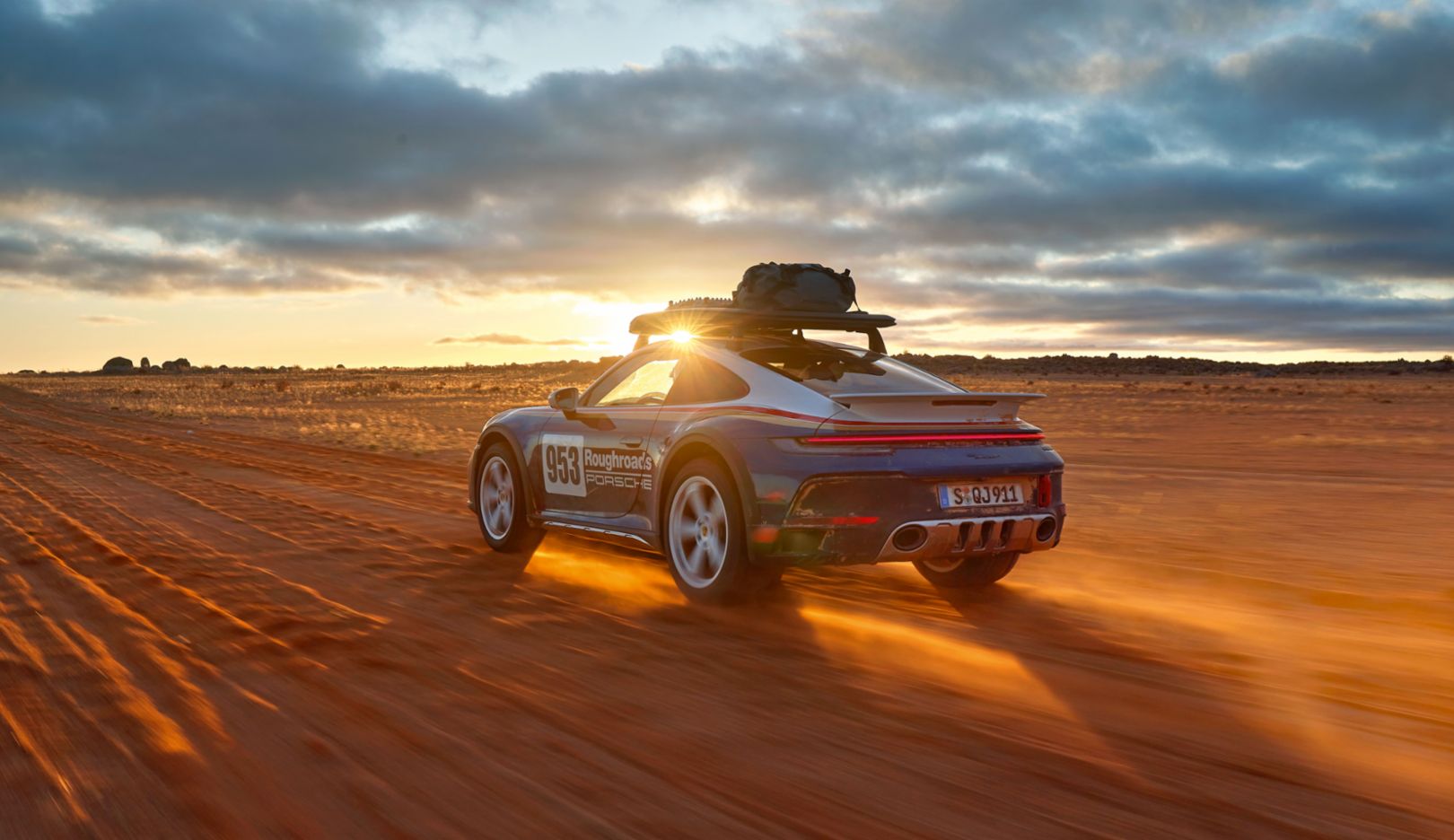
Premiere:
In the South African desert, the 911 Dakar unveils its features for the first time.However, the 911 Dakar will not be used for professional rally campaigns. “In particular, we want to address Porsche collectors and enthusiasts who would like to own an extraordinary 911 and – more importantly – drive one,” explains Frank-Steffen Walliser. The special series is limited to 2,500 vehicles.
The developers have already managed to win over one special fan. During the test-drives, former rally world champion and Porsche brand ambassador Walter Röhrl summarized his impressions in a single sentence: “The car is simply addictive.”
There’s no higher form of praise.
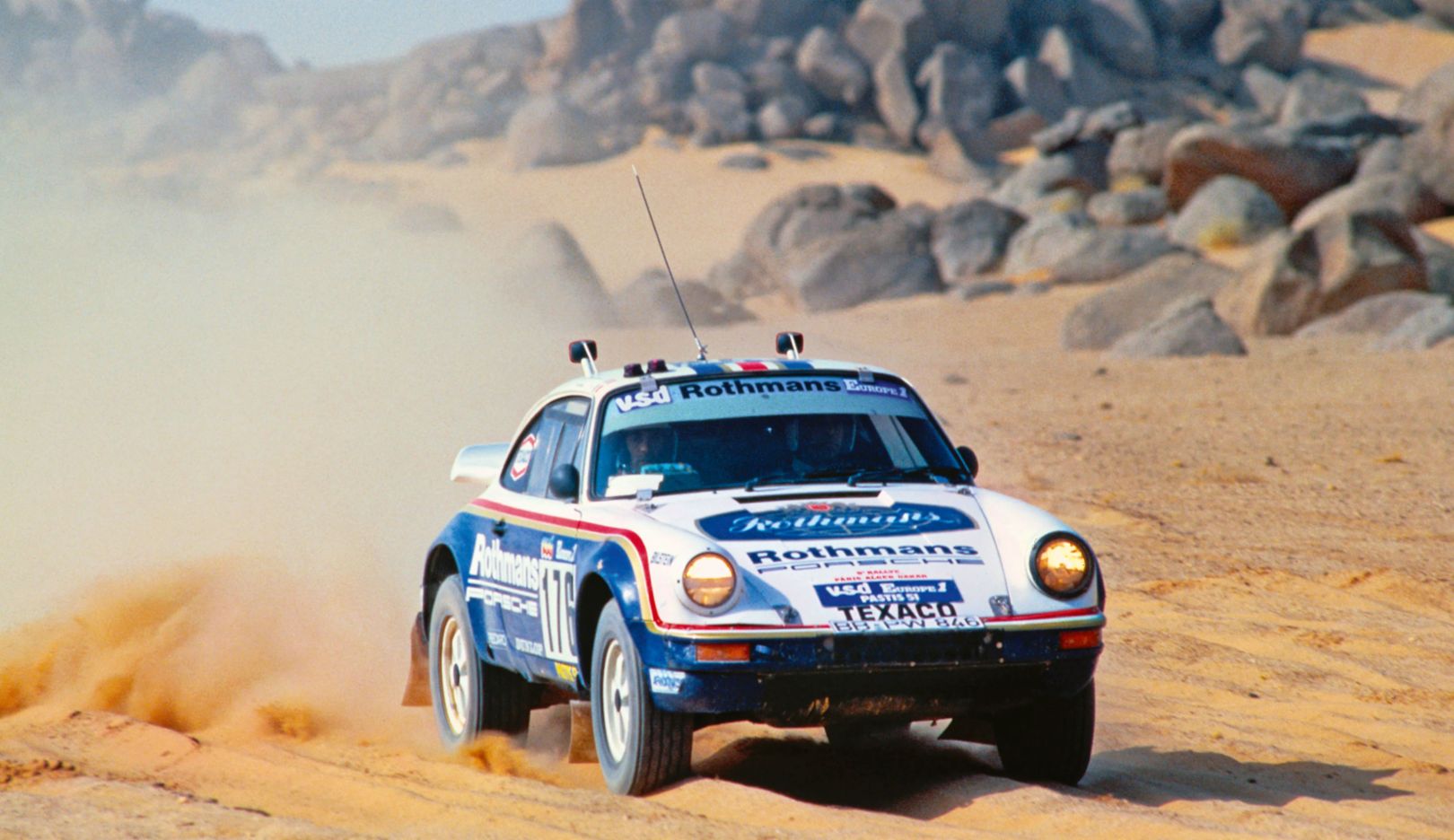
Natural Winner
The first Porsche works car in the Paris–Dakar Rally in 1984 was a success. René Metge together with codriver Dominic Lemoyne secured the overall win with a 911 Carrera 3.2 4x4 Paris Dakar (953) specially prepared for the route, which is around 12,000 kilometers long. It was the first 911 to feature all-wheel drive. The engineers also increased the suspension travel to 270 millimeters and fitted a double wishbone suspension with two shock absorbers at the front and a reinforced axle with two additional coil springs at the rear. Two further tanks – in the trunk and behind the driver’s seat – ensured there was enough fuel. Alongside the winning team, Jacky Ickx and Claude Brasseur were also participating. After a cable fire, they found themselves in 139th place in their 911 – but fought their way back up to sixth place. The winning vehicle was the first sports car to win the legendary rally.
Consumption data
911 Carrera 4S (2023)
911 Carrera GTS (2023)
-
11.4 – 10.4 l/100 km
-
258 – 236 g/km
-
G Class
911 GT3
-
13.8 – 13.7 l/100 km
-
312 – 310 g/km
-
G Class
-
G Class
Taycan Turbo GT
-
21.2 – 20.5 kWh/100 km
-
0 g/km
-
A Class
